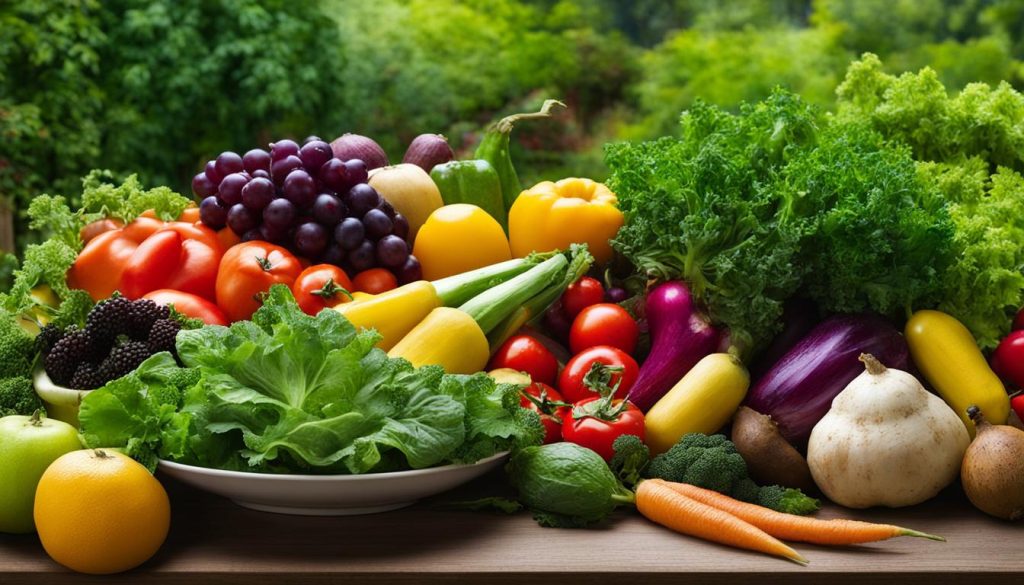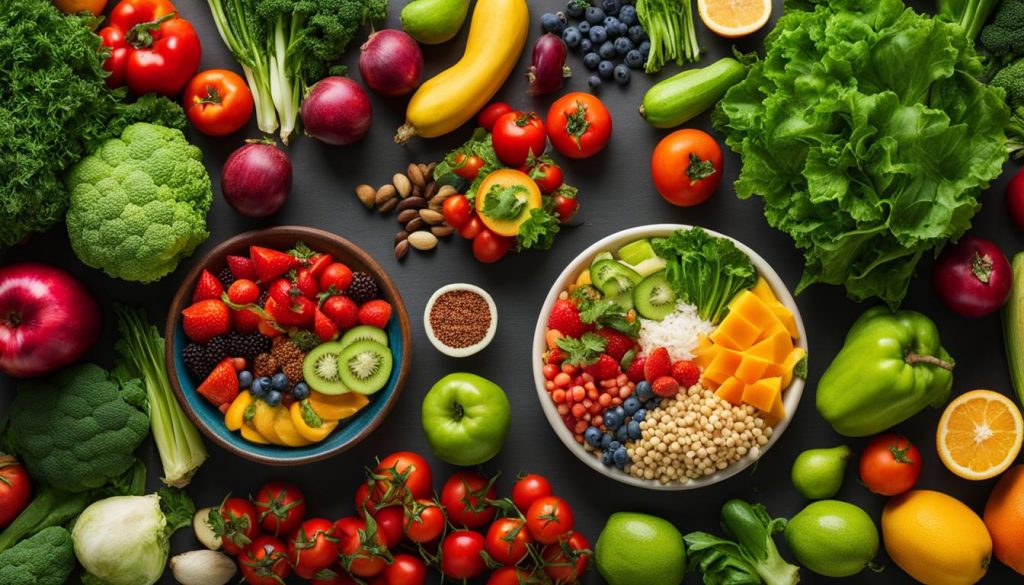All About the Semi-Vegetarianism Diet. A Simple Guide!

The Semi-Vegetarianism Diet, also known as the flexitarian diet, is a style of eating that encourages the consumption of mostly plant-based foods while still allowing for occasional meat and other animal products. It is a flexible approach to vegetarianism that aims to reduce meat consumption without completely eliminating it. The diet focuses on eating fruits, vegetables, legumes, and whole grains, and emphasizes protein from plants rather than animals. The goal is to incorporate more nutritious plant foods into the diet while still enjoying the occasional meat or animal product. This flexible eating plan is gaining popularity as people are looking for ways to eat healthier and reduce their impact on the environment.
Key Takeaways:
- The Semi-Vegetarianism Diet, also known as the flexitarian diet, encourages mostly plant-based foods with occasional meat and animal products.
- The diet focuses on eating fruits, vegetables, legumes, and whole grains, emphasizing protein from plants.
- It is a flexible approach to vegetarianism that aims to reduce meat consumption without completely eliminating it.
- The Semi-Vegetarianism Diet is gaining popularity as people look for healthier eating options and ways to reduce their environmental impact.
The Benefits of the Semi-Vegetarianism Diet
https://www.youtube.com/watch?v=spDs_wzn8To
The Semi-Vegetarianism Diet, or flexitarian diet, offers numerous benefits for those looking to improve their eating habits. By incorporating more plant-based foods into your diet while still allowing for occasional meat consumption, you can enjoy a variety of health benefits.
"Reducing meat consumption and increasing the intake of plant-based foods can help lower the risk of heart disease, manage weight, prevent and manage type 2 diabetes, and reduce the risk of certain cancers,"
Research suggests that the nutrients found in plant-based foods, such as fruits, vegetables, legumes, and whole grains, can contribute to overall health and well-being. These foods are packed with vitamins, minerals, and antioxidants that support a strong immune system and help the body function optimally.
Furthermore, adopting a semi-vegetarian diet can also have positive environmental impacts. By reducing meat consumption, you are contributing to the reduction of greenhouse gas emissions and the conservation of natural resources.
Inspiration for Vegetarian Recipes
Following a semi-vegetarian diet opens up a world of delicious vegetarian recipes. Explore the diverse range of plant-based dishes that can be enjoyed without sacrificing flavor or nutrition. From hearty salads and flavorful stir-fries to comforting soups and creative plant-based protein alternatives, there are endless possibilities to explore in the world of vegetarian cooking.
Adding variety to your diet with vegetarian recipes not only helps with meat reduction but also introduces different flavors and ingredients to your meals. Experimenting with new recipes can be a fun and exciting way to discover new favorite dishes and expand your culinary repertoire.
The Importance of a Balanced Diet
Adopting a semi-vegetarian diet encourages a balanced approach to eating. By focusing on incorporating a wide range of nutrient-dense plant foods into your meals, you can ensure that you are getting a variety of vitamins, minerals, and other essential nutrients. This balanced approach promotes overall health and well-being.
Remember, a balanced diet is not just about eliminating certain foods but rather about creating a diverse and nourishing plate. It's important to include a mix of fruits, vegetables, whole grains, legumes, nuts, and seeds to meet your nutritional needs. Making thoughtful food choices and balancing your intake of different food groups is key to maintaining a healthy and sustainable eating plan.
How to Follow the Semi-Vegetarianism Diet

Following the Semi-Vegetarianism Diet is a flexible approach to healthy eating and weight management. There are no strict rules or guidelines, allowing individuals to tailor the diet to their personal preferences and goals. Whether you're a beginner or an expert, here are some tips on how to incorporate this sustainable eating plan into your lifestyle.
One key aspect of the Semi-Vegetarianism Diet is gradually reducing meat consumption while increasing the intake of plant-based foods. Beginners can start by designating two meat-free days per week and limiting meat consumption to 26 ounces. As you become more comfortable with this approach, you can progress to three to four meat-free days and 18 ounces of meat per week, and eventually aim for five meat-free days and only 9 ounces of meat on the remaining two days.
It's important to focus on consuming a variety of plant-based foods to ensure a balanced diet. Incorporate plenty of fruits, vegetables, legumes, whole grains, nuts, and seeds into your meals. These foods are rich in essential nutrients, fiber, and antioxidants, which can support weight management and overall health. Additionally, be mindful of your intake of processed meats and refined carbohydrates, as they should be limited in a healthy eating plan.
Quotes:
I started following the Semi-Vegetarianism Diet a few months ago, and it has been a game-changer for me. By gradually reducing my meat consumption and incorporating more plant-based foods into my meals, I've noticed a significant improvement in my weight management and overall well-being. Plus, I feel good about making a positive impact on the environment through sustainable eating.
Flexibility is the key to success when following the Semi-Vegetarianism Diet. I started by designating two meat-free days per week and gradually increased to five days. The transition was easier than I anticipated, and I discovered so many delicious vegetarian recipes along the way. It's a lifestyle that I can sustain long-term, and I highly recommend giving it a try.
By embracing the Semi-Vegetarianism Diet, you can prioritize sustainable eating habits while still enjoying the occasional meat or animal product. Remember that the goal is to incorporate more plant-based foods into your diet, so be creative with your meal planning and explore new flavors and ingredients. With commitment and an open mind, you can successfully follow this flexible and health-conscious approach to eating.
The Impact of the Semi-Vegetarianism Diet on Health and the Environment

Adopting the Semi-Vegetarianism Diet can have a profound impact on both personal health and the environment. By reducing meat consumption and increasing intake of plant-based foods, individuals can experience numerous health benefits. Research shows that this dietary approach can lower the risk of heart disease, type 2 diabetes, and certain cancers. The focus on nutrient-dense plant foods provides essential vitamins, minerals, and antioxidants that support overall health and well-being.
"The Semi-Vegetarianism Diet allows individuals to prioritize their health while still enjoying occasional meat consumption," says Dr. Jane Anderson, a renowned nutritionist. "By incorporating more plant-based foods into their diet, they are able to improve their nutrient intake and reduce the risk of chronic diseases."
In addition to the health benefits, the Semi-Vegetarianism Diet is also beneficial for the environment. Animal agriculture is a significant contributor to greenhouse gas emissions and consumes vast amounts of natural resources. By choosing plant-based alternatives over meat, individuals can help mitigate climate change, reduce water usage, and minimize pollution. This dietary shift promotes sustainability and aligns with the growing awareness of the environmental impact of food choices.
The Importance of Sustainable Eating
Sustainable eating goes beyond personal health and extends to the well-being of the planet. By adopting the Semi-Vegetarianism Diet, individuals can contribute to a more sustainable future. "Our food choices have a direct impact on the environment," says Dr. Sarah Davis, an environmental scientist. "By reducing meat consumption, we can conserve resources, reduce deforestation, and minimize the negative effects of agriculture on ecosystems."
Embracing a Semi-Vegetarianism Diet is a proactive step towards a healthier lifestyle and a greener planet. So why not make a positive change today? By prioritizing plant-based foods and reducing meat consumption, you can enjoy the many health benefits while playing a part in creating a more sustainable world for future generations.
Conclusion
In conclusion, the Semi-Vegetarianism Diet, also known as the flexitarian diet, provides a flexible and sustainable approach to healthy eating. By incorporating more plant-based foods into your diet while still allowing for occasional meat consumption, you can enjoy the benefits of a balanced diet while reducing your environmental impact.
Whether you choose to follow a beginner, advanced, or expert level of meat restriction, the key is to focus on consuming a variety of nutrient-dense plant foods. This includes fruits, vegetables, legumes, whole grains, nuts, and seeds. By making conscious choices about your food consumption, you can improve your health and contribute to a more sustainable future.
The Semi-Vegetarianism Diet offers numerous health benefits, including a reduced risk of heart disease, type 2 diabetes, and certain cancers. It also promotes weight management and overall well-being. Additionally, by reducing meat consumption, you can help mitigate climate change by reducing greenhouse gas emissions and conserving natural resources.
Embracing a Semi-Vegetarianism Diet is not only beneficial for your personal health but also for the planet. So why not give it a try? Start by incorporating more plant-based meals into your weekly routine and gradually reduce your meat consumption. Your body and the environment will thank you.
FAQ
What is the Semi-Vegetarianism Diet?
The Semi-Vegetarianism Diet, also known as the flexitarian diet, is a style of eating that encourages the consumption of mostly plant-based foods while still allowing for occasional meat and other animal products.
What does the Semi-Vegetarianism Diet focus on?
The diet focuses on eating fruits, vegetables, legumes, and whole grains, and emphasizes protein from plants rather than animals.
What are the health benefits of following the Semi-Vegetarianism Diet?
Research suggests that reducing meat consumption and increasing the intake of plant-based foods can help lower the risk of heart disease, manage weight, prevent and manage type 2 diabetes, and reduce the risk of certain cancers.
How flexible is the Semi-Vegetarianism Diet?
Following the Semi-Vegetarianism Diet is relatively flexible, as there are no strict rules or guidelines. Individuals can choose different levels of meat restriction, ranging from two meat-free days per week to five meat-free days per week.
What should I focus on when following the Semi-Vegetarianism Diet?
It is important to focus on consuming a variety of plant-based foods, including fruits, vegetables, legumes, whole grains, nuts, and seeds, while limiting processed meat and refined carbohydrates.
What are the environmental impacts of the Semi-Vegetarianism Diet?
Adopting a semi-vegetarian diet can have positive environmental impacts by reducing greenhouse gas emissions and the use of natural resources. Choosing plant-based alternatives over meat can reduce environmental impacts, including carbon footprint, water use, and pollution.
How can the Semi-Vegetarianism Diet contribute to weight management?
By reducing meat consumption and focusing on nutrient-dense plant foods, the Semi-Vegetarianism Diet can help manage weight by providing a balanced and nutritious eating plan.
Can the Semi-Vegetarianism Diet help prevent certain diseases?
Research suggests that reducing meat consumption and increasing plant-based foods in the diet can help lower the risk of heart disease, type 2 diabetes, and certain cancers.
What is the goal of the Semi-Vegetarianism Diet?
The goal of the Semi-Vegetarianism Diet is to incorporate more nutritious plant foods into the diet while still enjoying the occasional meat or animal product, promoting both personal health and environmental sustainability.